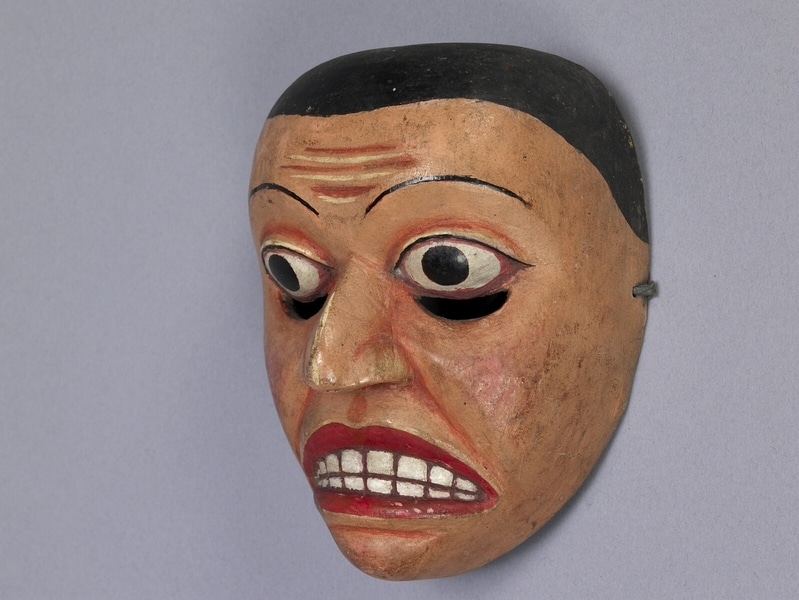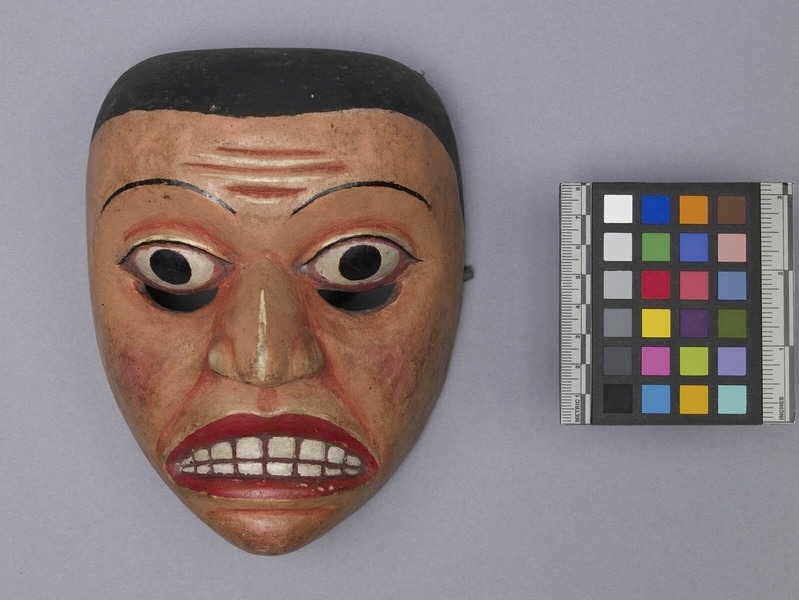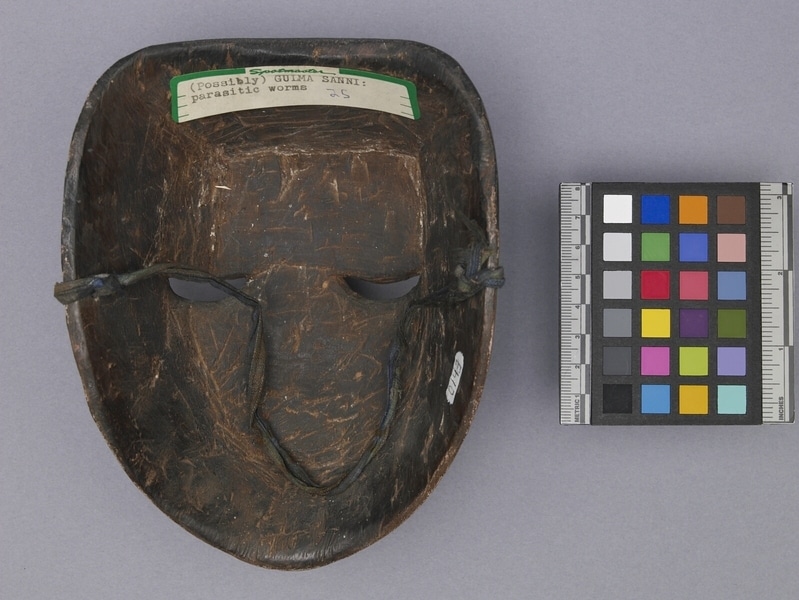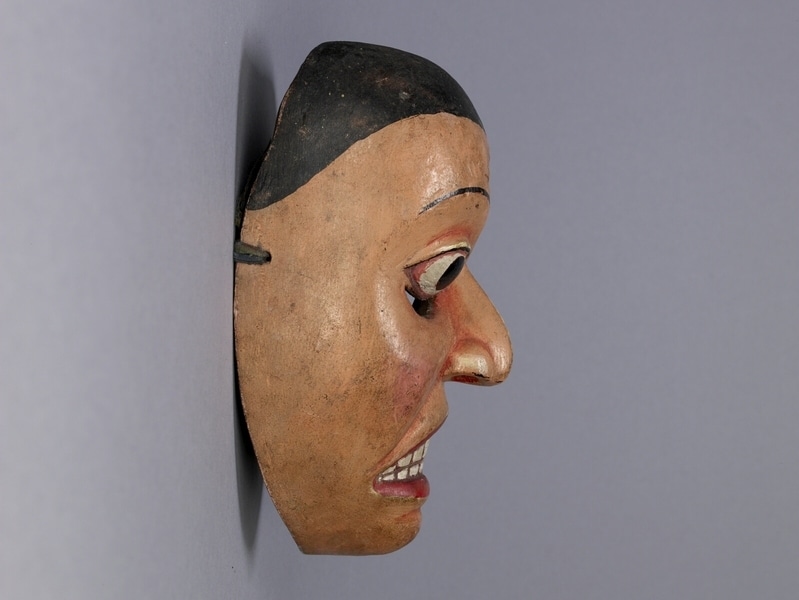Mask Item Number: Eh10 from the MOA: University of British Columbia




Description
Mask possibly depicting Gulma Sanniya (representing parasitic worms, lack of apetite, or swelling of the abdomen) that has been painted orange-pink with black hair and eyebrows. On the high forehead there are three horizontal grooved lines in the centre. The eyes are large, well defined and round, and are thinly outlined in black. The nose is wide and protruding with large nostrils, and the mask also has a wide open mouth with downturned corners and showing two rows of teeth. Under each eye is a crescent-shaped slit. A faded blue cloth strap, perhaps a shoestring (?) that is tied through holes on either side of the mask. A label adhered to the reverse has a typed inscription which says, "(Possibly) GULMA SANNI: parasitic worms" and has "25" written beside the typed text.
History Of Use
Worn during curing ritual of the Sanni Yakuma ceremony, part of the Tovil series of dramas performed by Sinhalese ritual specialists and dancers. The Sanni Yakuma is intended to combat diseases and afflictions caused by the Sanni group of demons. These consist of 18 or more apparitions of the chief demon, Maha-kola-sanni. The officiating healer honours Buddha, then appeases the demons with offerings, dancing, and chanting. This mask represents Gulma Sanni, a demon causing parasitic worms and stomach upset. The major symptoms of a patient afflicted by this demon are: diarrhea, vomiting, inability to eat food and nausea .
Cultural Context
exorcism
Iconographic Meaning
The dirty yellow/red colour signifies disease, accompanied by shortness of breath, choking, fits of coughing, etc. The red lips are for demons. The open mouth represents a disease caused by worms in the stomach; the character yells about his stomach-ache.
Item History
- Made in Sri Lanka before 1978
- Collected during 1978
- Owned by Jason Schoonover before February 10, 1981
- Received from Museum of Anthropology Shop Volunteers (Funding source) and Jason Schoonover (Seller) on February 10, 1981
What
Who
- Culture
- Sinhalese
- Previous Owner
- Jason Schoonover
- Received from
- Museum of Anthropology Shop Volunteers (Funding source) and Jason Schoonover (Seller)
Where
- Holding Institution
- MOA: University of British Columbia
- Made in
- Sri Lanka
When
- Creation Date
- before 1978
- Collection Date
- during 1978
- Ownership Date
- before February 10, 1981
- Acquisition Date
- on February 10, 1981
Other
- Condition
- fair
- Current Location
- Case 107
- Accession Number
- 0704/0009